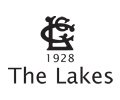Environment
The Lakes Golf Club is located within the Botany Wetlands, a beautiful sanctuary that is located in Sydney’s Eastern Suburbs and only 15 minutes from the busy city centre. Respecting the value of the Botany Wetlands is a core objective of the Club.

Botany Wetlands
Through our Environmental Management Plan (EMP) we actively pursue the preservation of the wetlands area. Our aim is to nurture an environment that will protect rare and distinct remnant vegetation and will provide a sanctuary for wildlife.
Issues that the club actively manages and monitors include:
- Water use and quality preservation
- Appropriate chemical usage
- Soil conservation
- Native bush regeneration
- Fauna and habitat
Water Use & Quality Preservation
The club has a range of management practices in place to minimise any potential impacts that club operations could have on water quality.
Stormwater entering the course is a major source of gross pollutants and even though the lakes are the responsibility of government department Sydney Water, the Club assigns staff every week to ensure the lakes are presented in pristine condition.
The use of fertilisers and pesticides is strictly controlled to avoid contamination.
Management of water use extends to keeping and comparing records of rainfall and water usage, maintaining and improving irrigation infrastructure and minimising water use through a variety of well-established control techniques.


Chemical Use & Soil Conservation
It is the policy of The Lakes to only apply sufficient fertiliser to allow grass to recover from wear and tear of play. Fertilisers are only applied during the growing season and, where possible, application is timed to avoid heavy rain.
Pesticide use at The Lakes is part of an overall integrated pest management philosophy and approach. One relevant example of this is hand spraying around the wetlands to prevent potential risks of contamination that could arise with boom spraying.The club keeps comprehensive and accurate records of all chemicals used on the course.
Soil conservation is important both for the protection of the soil itself and to protect the wetlands from further siltation. Maintaining a constant vegetation cover over soil is the most effective way of minimising soil erosion and this practice is followed at The Lakes.
Native Bush Regeneration
The club is required to undertake appropriate regeneration and revegetation works as part of its lease conditions. All native remnant vegetation needs to be protected.
Remnants of Eastern Suburbs Banksia Scrub, listed as a threatened species, have been identified and marked. Although regeneration potential appears to be limited, efforts are being made to rehabilitate the areas, including the engagement of qualified bush regenerators to assist in the process.
A coherent palette of plants, with a strong emphasis on locally indigenous species, is being used to improve the landscape character, provide habitat for local fauna, particularly birds, and to fulfil the club’s lease conditions with Sydney Water.

